Allison Bruning's Blog, page 21
June 3, 2014
#ExpressYourself: Strong Girls Unite #gaming #heroines
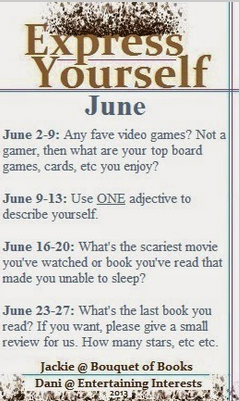
Welcome back to the Express Yourself weekly blog hop. Today I was asked "What are my favorite video games?"
I have always loved to play video games. I can get sort of addicted to them, especially the fantasy genre ones.
When I was little I loved to play Mortal Kombat, especially with Jade and Princess Kitana. I grew up in the 80's and there just weren't that many female characters who were strong enough to stand on their own and defend themselves. So I played with Jade and Princess Kitana as much as I could. It was hard at first because Jade was a secret character when she was first introduced but she became playable in Ultimate Mortal Kombat III.
A few years ago, I was introduced to World of Warcraft by my niece's then husband. I joined the game so I could play with him. He was a huge gamer and my thinking was this would be a great bonding experience. Then I got sucker into. I was playing for four to six hours every night after work. I had six characters and most of them were females. My strongest character was a warrior named Ravenlore.
Then I got hooked onto Tomb Raider. I love Tombraider because she's strong and she's into archaeology. It was about time there was a female Indiana Jones. I mean come on! She's the ultimate heroine, right?
I no longer have time to play video games but if I did these would be the ones I would play.
Published on June 03, 2014 02:53
June 2, 2014
To Be #Shawnee: In Their Own Voice #NativeAmerican #History
To Be Shawnee - In Their Own Voice John "Soaring Eagle" AdamsWelcome back to the To Be Shawnee series. Today I have a very special treat for all of you. Actor and director, John L. Adams is a direct descendant of the famous Shawnee war chief, Tecumseh. He recently shared about his tribes' history and culture in Indiana. I have attached his complete presentation to my blog for your viewing. What a wonderful way to learn more about the Shawnee people, the People of the Southwind.
Published on June 02, 2014 21:00
June 1, 2014
#MentalHealthAwareness: What is #Asperger's Syndrome?
 Welcome to the Mental Health Awareness Month Blog Hop. This month I will be focusing on Aspergers Syndrome, which is a form of Autism.
Welcome to the Mental Health Awareness Month Blog Hop. This month I will be focusing on Aspergers Syndrome, which is a form of Autism.What is Asperger's Syndrome?
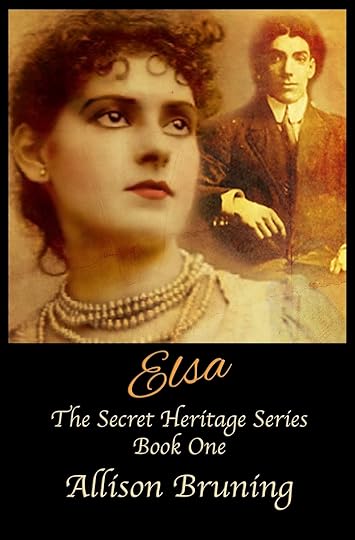 http://amzn.to/GADXKE “I don’t understand why you two are acting like this and why Cora says he’s stupid. He’s not stupid, he’s wonderful,” Elsa protested. Gideon answered, “Elsa, Franklin has to do things a certain way. Every day of his life he has to follow a strict routine or he will not be able to concentrate on the task he’s asked to do. When he plans to do something it is planned down to the tiniest of details. Sometimes one of those details is so peculiar you would miss it. Not Franklin. He has to complete each step of his plan in precise order.” “He was going to propose at the dance, wasn’t he?” “He was.” Juliette interrupted, “He had it planned all out. How did he react when you told him you knew his intentions?” “He was upset. Cora said it was a panic attack.” Gideon shook his head, “It was too much for him. Elsa, you are right about my son’s intelligence. He is very smart but there are just some things we don’t tell him because we know it will upset him.”- From Elsa: (The Secret Heritage Series: Book 1) by: Allison Bruning
http://amzn.to/GADXKE “I don’t understand why you two are acting like this and why Cora says he’s stupid. He’s not stupid, he’s wonderful,” Elsa protested. Gideon answered, “Elsa, Franklin has to do things a certain way. Every day of his life he has to follow a strict routine or he will not be able to concentrate on the task he’s asked to do. When he plans to do something it is planned down to the tiniest of details. Sometimes one of those details is so peculiar you would miss it. Not Franklin. He has to complete each step of his plan in precise order.” “He was going to propose at the dance, wasn’t he?” “He was.” Juliette interrupted, “He had it planned all out. How did he react when you told him you knew his intentions?” “He was upset. Cora said it was a panic attack.” Gideon shook his head, “It was too much for him. Elsa, you are right about my son’s intelligence. He is very smart but there are just some things we don’t tell him because we know it will upset him.”- From Elsa: (The Secret Heritage Series: Book 1) by: Allison BruningThe life of someone who has Asperger's Syndrome and the ones who love them can be quite complex. My novel, Elsa, takes place in 1909, a time when Asperger's Syndrome had not yet been discovered. Although it hadn't been discovered there were plenty of people in history who had it.
Asperger's Syndrome was not recognized as a mental condition until Austrian pediatrician, medical theorist, and medical professor, Hans Asperger published a definition of autistic psychopathy in 1944 after studying four boys who in his words had "a lack of empathy, little ability to form friendships, one-sided conversations, intense absorption in a special interest, and clumsy movements." Think of these children as little Mr. Spocks from Star Trek.
Hans Asperger also noted that many children with these characteristic tended to become very successful in their chosen careers in adulthood because they were able to hone in on their special interests. These adults could talk for hours about their specialized interests even when their audience had long lost interest in the topic. Some famous people who had Asperger's Syndrome are Albert Einstein, Bill Gates, Sir Isaac Newton, Alfred Hitchcock, Jane Austin, Hans Christian Anderson, Charles Darwin, Thomas Jefferson, Charles Shultz, Mozart, Thomas Edison, Michael Jackson, Mark Twain and Jim Henson.
Hans Asperger worked with patients who had Asperger's Syndrome until his death on October 21, 1980. Despite his hard work, Asperger's Syndrome was not well known until after his death. Scientists Tantam (1988) in the UK, Gillberg and Gilbert in Sweden (1989), and Szatmari, Bartolucci and Bremmer (1989) in North America each conducted the first systematic studies of patients with Asperger's Syndrome which was later published in the years show by their names. In 1989, Gillberg and Gillberg in Sweden and Szatmari in North America each proposed a criteria establishing the symptoms required to diagnosis someone with Asperger's Syndrome. Yet Asperger's Syndrome would not be widely recognized until it became a distinct diagnosis by it's inclusion in the 0th published edition of the World Health Organization’s diagnostic manual, International Classification of Diseases (ICD-10). It was added to the fourth edition of the Diagnostic and Statistical Manual of Mental Disorders (DSM-IV) as Asperger's Disorder in 1994. Asperger's Syndrome was named after Hans Asperger.
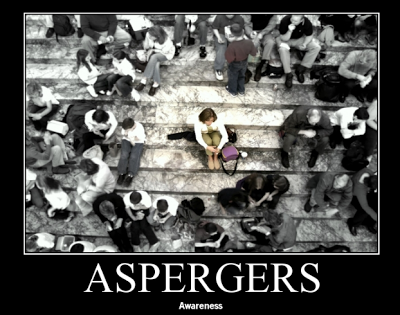
So what are the criteria to be diagnosed with Asperger's Syndrome?
According to the DSM-IV Asperger's Syndrome Criteria is defined as:
(I) Qualitative impairment in social interaction, as manifested by at least two of the following:(A) marked impairments in the use of multiple nonverbal behaviors such as eye-to-eye gaze, facial expression, body posture, and gestures to regulate social interaction(B) failure to develop peer relationships appropriate to developmental level(C) a lack of spontaneous seeking to share enjoyment, interest or achievements with other people, (e.g.. by a lack of showing, bringing, or pointing out objects of interest to other people)(D) lack of social or emotional reciprocity(II) Restricted repetitive & stereotyped patterns of behavior, interests and activities, as manifested by at least one of the following:(A) encompassing preoccupation with one or more stereotyped and restricted patterns of interest that is abnormal either in intensity or focus(B) apparently inflexible adherence to specific, nonfunctional routines or rituals(C) stereotyped and repetitive motor mannerisms (e.g. hand or finger flapping or twisting, or complex whole-body movements)(D) persistent preoccupation with parts of objects
(III) The disturbance causes clinically significant impairments in social, occupational, or other important areas of functioning.
(IV) There is no clinically significant general delay in language (E.G. single words used by age 2 years, communicative phrases used by age 3 years)
(V) There is no clinically significant delay in cognitive development or in the development of age-appropriate self help skills, adaptive behavior (other than in social interaction) and curiosity about the environment in childhood.
(VI) Criteria are not met for another specific Pervasive Developmental Disorder or Schizophrenia."
Unfortunately the DSM-V, released May 2013, has eliminated the term Asperger's Syndrome replacing it with autism spectrum disorder (ASD). This has brought much controversy from the families, friends and professionals of those who care about someone with Asperger's Syndrome. The new criteria has included three levels of they syndrome ranging in severity.
Under the new guidelines, Franklin Raymond would be diagnosed as Level 2 ASD with tendencies to drop to a Level 1 when overstimulated.
Published on June 01, 2014 21:00
#SundayPost: What's New #AllisonBruning?

Welcome to a new weekly feature on my blog. There have been so many wonderful changes since I was picked up by my manager, Craig Michael Lewis, and there are many great things ahead for me.
The Sunday Post is the place to be if you want the latest news on my writing career. I'll be posting my announcements in this feature each week.
Week of June 1 - June 7
I can't believe it's the first week of June. Where has the time gone by?
Mental Health Awareness MonthThis month is Mental Health Awareness Month. My book, Elsa, has to do with a man who has Aspergers Syndrome, which is a form of Autism. This month I will be presenting posts on Aspergers and Autism on Monday and Wednesday in addition to my regularly scheduled posts.
Winners!Last week I participated in the ArmchairBEA and hosted two giveaways on my blog. Here are the winners.
CALICO (CHILDREN OF THE SHAWNEE: 1)
Mary McAuliffe
BAILEY'S REVENGE (IRISH TWIST OF FATE: 1)
Melissa Meeks
ELSA (THE SECRET HERITAGE: 1)
Kristen Noel
REFLECTIONS: POEMS AND ESSAYS
Rose Causey
WHO IS THE REAL JOHN WILKES BOOTH?
Suzanne Cowles
THE LOST CAMPER
Jessica Hizey Chiles
GRAND PRIZE WINNER!
Rose C.
Published on June 01, 2014 02:49
May 30, 2014
Celebrate: Book Expo America

I have spent the entire week attending the ArmchairBEA. It was the first time I had ever attended a large conference online. ArmchairBEA is an online convention for book bloggers who are unable to attend the Book Expo American conference in New York City.
This year there were close to 400 bloggers in attendance. I have been reading around 100 blogs per day this week along with taking part in the Twitter Parties and sessions on the ArmchairBEA website.
My small blessing this week is meeting and interacting with all the wonderful book bloggers. I have learned so much at this conference. Next year, I plan to attend the BEA in New York City as an author. This years Book Expo has close to 700 authors signing books. I want to be one of them next year. Who knows? Maybe I'll meet my historical fiction author heroine, Margaret George.
Published on May 30, 2014 06:47
May 29, 2014
#ArmchairBEA: How I Became a Writer and Middle Grade/Young Adult

HOW I STARTED MY WRITING CAREER Passion! It is the heartbeat of any writer, the insatiable hunger from deep within an author’s soul to write. Lord Byron once said, “If I don't write to empty my mind, I go mad.” I know how he feels; the flow of words that clutter your mind, urging you to pour out your heart and soul onto a blank piece of paper. The longer you ignore it the more you think you will go insane. Your only relief lies with pen and paper or your computer. Letting go of reality, you allow your characters to tell the story. You draw so close to them and dig so deep into your story you forget time and place. You begin to talk about your characters as if they weren’t fictional but members of your family. The story unfolds before your eyes. Lost within, you are consumed by the story and forget the pen, paper or computer. You know the story is over when you feel it. The journey has ended. Sorrow fills your heart.

I have felt compelled to bare my heart and soul into the written word from an early age. The only child of a single mother, I would often spend most of my time at my grandmother’s house. One afternoon after she picked me up from Kindergarten, I had showed her a tiny book I had made in school. I was excited about my new book. A few days later, my grandmother surprised me with paper, pen, crayons and construction paper. She wanted me to make her a book. I couldn’t have been more elated! My grandmother had recognized my passion for writing and decided to foster that. For years I would write her a story then I would read it to her.
As I grew older, I tried my hand at keeping a diary but my diary ended up being more of a journal. I began to discover I could write pages upon pages of material in one sitting. I also enjoyed reading. There was never a day that went by where I didn’t carry a book, a notepad and a pen with me. There was just so much to explore and write about! In upper elementary, I was placed in advanced reading classes. By middle school, I discovered I had a love for research and writing reports. I continued to write fiction and poems but felt a need to further explore the world of writing. In eighth grade I was reading at a freshman college level and was writing reports at a High School level. I was even getting in trouble at school on purpose so I would be sent to Saturday School in order to write reports. That worked well until the principal and my mother learned why I wanted to get in trouble. By the time I was in High School, I had written over 20 books, 2 movie scripts, and over a dozen research papers on my own. I was poet for the literary magazine, a newspaper reporter and a member of the Yearbook in High School.
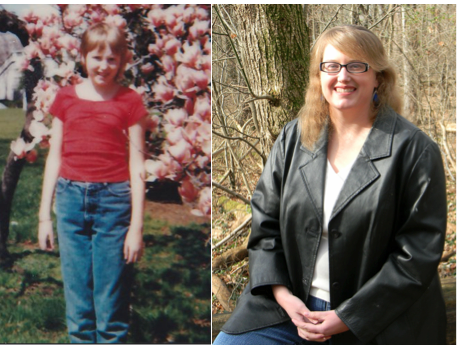 My thirst for writing never left me after High School. It was only intensified as I discovered the English Department at Sul Ross State University. There I was taught how to compile a writing profile. Every English professor required one for their class. In my advanced English 101 class, my professor noticed my talent and told me I should pursue a writing career. She urged me to keep writing and to take as many English classes as I wanted. I eventually accumulated enough hours to have English as my major but never sought the degree. Instead I graduated with a degree in Theatre Arts and a minor in Anthropology. Yet I never lost my passion for writing.
My thirst for writing never left me after High School. It was only intensified as I discovered the English Department at Sul Ross State University. There I was taught how to compile a writing profile. Every English professor required one for their class. In my advanced English 101 class, my professor noticed my talent and told me I should pursue a writing career. She urged me to keep writing and to take as many English classes as I wanted. I eventually accumulated enough hours to have English as my major but never sought the degree. Instead I graduated with a degree in Theatre Arts and a minor in Anthropology. Yet I never lost my passion for writing.My professional writing career began six years ago when my husband and I moved from Texas to Kentucky. I felt the urge to write a story. I spent the entire summer researching and writing Calico. My story was over 500 pages long. At the advice of a publisher, I split Calico into several different stories that eventually lead me to a complete series of 11 books. I named the series, Children of the Shawnee.
I have recently returned to my notes and changed the series so that some of the books have their own series now. My idea is to create a family saga, known as the Turner Family Saga, that is comprised of four series. The Turner Family Saga begins with Bailey's Revenge. The first series, Irish Twist of Fate, is the story of Calico's grandmother in Ireland. The second series will cover Calico's mother's, Anne, life and will be titled New Hope. The third series is the Children of the Shawnee series and the last series will cover Calico's daughter under the leadership of Tecumseh.
A Little House Memory
Of all the authors I ever read as a child the one that stuck with me the most was Laura Ingalls Wilder. I could never get enough of reading her books. Laura had a way with words that was pure entertainment for my eyes. The best thing about Laura's books was that they were all based on actual events. She was able to tell her life story in a way that has lasted for generations.
I have always wanted to visit all of her homesteads and last year I was granted the opportunity to visit upon the Little House on the Prairie site outside of Independence, Kansas. My husband and I arrived at the site in time to enjoy a picnic lunch in the same prairie where the real Laura Ingalls Wilder had ran and played with her sister, Mary. It was surreal to think that the character in the books and on the TV show was a real person. A little girl who could have well stood in the same place where we ate our lunch. I always knew that Laura was a real person.
Charles Philip (Pa) and Caroline Lake Quiner Ingalls (Ma) arrived in Kansas with five year old Mary Amelia Ingalls and three year old Laura Elizabeth Ingalls in 1869. They had arrived on the Kansas plains with other settlers who thought the land was open for settlement. The small family lived in their one room cabin for little over a year. It was during this time that the family had contracted an ailment that would have killed them had not Dr. Tann stumbled upon the family. Dr. Tann was a black doctor that Laura mentions in her book. It is also at this Little House where the family meets Mr. Edwards. Mr. Edwards is actually Edmund Mason. Both Dr. Tann and Edmund Mason are buried in Independence, Kansas but in different cemetaries. Another major event for the Little House family occurred on this site as well. It was here that Caroline Celestia Ingalls (Carrie) was born.
Laura described the prairie in her Little House on the Prairie book "as far as they could see, to the east and to the south and to the west, nothing was moving on all the vastness of the High Prairie. Only the green grass was rippling in the wind, and white clouds drifted in the high, clear sky." The land was paradise for the little family. But it would not remain so for long.
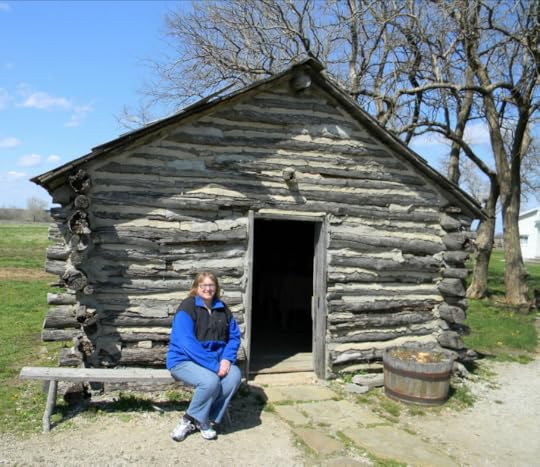 Little did Pa know but the land he had chosen to settle on was part of the Osage Diminished Reserve.
Little did Pa know but the land he had chosen to settle on was part of the Osage Diminished Reserve. The Osage Diminished Reserve had been land the United States Government had set aside for the Osage Nation to use. The Osage Nation had migrated into the Kansas area during the 17th century. The Osage had been one of their hunting trips when the settlers, along with the Ingalls, had decided to settle on their lands. The Osage Nation was constantly at war with the settlers. Laura was accustomed to seeing the Native Americans. In 1870, the United States Government bought the Osage Diminished Reserve from the Osage Nation but since Pa and other settlers had not filed a claim for their lands they were told they would have to leave or the US Army would force them to leave. Pa packed up his little family and headed back to Pepin, Wisconsin. It was easy for Pa to find a place to live in Wisconsin. He had sold his farm three years earlier but the gentlemen who had bought it had never paid Pa for the transaction. Pa reclaimed his farm and cabin where he lived with his little family until 1874.
Published on May 29, 2014 21:00
#SalvationArmy #History: The Troubled Youth of William Booth
 The Salvation Army began in 1852 when William Booth, a British Methodist preacher, began ministering in the streets of London to the poor, homeless, hungry and destitute. William Booth was born on April 10 1829 in Sneinton, Nottingham, England. He was the second son of five children born to Samuel and Mary Booth. The struggles he faced in his childhood would influence him into a life of ministry that would spark a movement.
The Salvation Army began in 1852 when William Booth, a British Methodist preacher, began ministering in the streets of London to the poor, homeless, hungry and destitute. William Booth was born on April 10 1829 in Sneinton, Nottingham, England. He was the second son of five children born to Samuel and Mary Booth. The struggles he faced in his childhood would influence him into a life of ministry that would spark a movement.It All Began With His Father
Samuel Booth was a speculative builder who had been born into poverty. He worked as a nail builder but found the work mundane. Samuel was a difficult man. He was often described as cold hearted, unemotional and cold minded. He was attracted to money and he was driven to acquire as much as possible. Samuel married Sarah Lockitt, nine years his senior, on November 13, 1797 in Nottingham and resided with her there. Sarah gave birth to their only child, William Adcock Booth, either in 1799 or 1800. Sarah died on January 13, 1818 or 1819. Samuel wrote and had the following poem placed upon her gravestone.
With deepest thoughts spectator view thy fateThus mortal pass to an immortal state;Through death's dark vale we hope she's found the way.In those bright regions of eternal day.
Although he wrote the poem Samuel was not a churchgoing man. William Adcock Booth described his father as "religiously blind" and claimed he could "never remember him in a place of worship."
The British Industrial Revolution began in 1770 and ended in 1850. It was during this time England's economy shifted from an agricultural to industrial. The change did not occur overnight but was created by technological advances in several fields. Although it was hard for the society to change, some men took advantage of the opportunities the Industrial Revolution allowed. Samuel Booth was one of these men. He left his life as a nailer behind him and embarked on a new one as an architect. The funds were significant enough to afford him a comfortable life. Samuel was a shrewd business man who was able to convince many he has more wealth than he actually had.
William Adcock Booth married Catherine Edwards on November 14, 1822 and died of tuberculosis on July 26, 1824. While Samuel had done well throughout his widowhood without many abrupt changes it was the death of his son that caused the most significant change in his life.
Soon after his son's death, Samuel visited Ashby-de-la-Zouch in hopes the spas would heal him of his rheumatism. It was here he met Mary Moss, sixteen years his junior, and was smitten by her. Mary was often described as a proud woman with piercing eyes like a duchess. She was also describes as a woman of very few words that had an air of mystery about her. Like Samuel, was of Jewish descent. Samuel proposed marriage but Mary refused. He returned to Nottingham heartbroken but determined. Samuel continued to visit upon Ashby-de-la-Zouch and proposed to Mary every time until she eventually submitted to his cause. The couple were married November 2, 1824 in Ashby-de-la-Zouch and lived in Nottingham where Samuel was an architect. Mary gave him five children - Henry, Ann, William, Emma and Mary. Henry died when he was three years old leaving William the only son with an elder and two younger sisters.
Although Samuel was not involved in his children's lives he did insist that they go to church. William
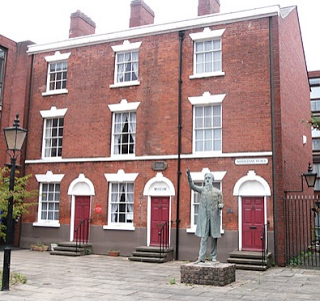 William Booth's Childhood Home
William Booth's Childhood HomeSneinton, Nottingham, Englandand his sisters faithfully went to Sunday School every week. Life was a series of financial ups and downs for the family. Samuel was considered a gentlemen when William was born yet it would not remain. Bad times came, as so often they do, and Samuel struggled. There were a series of unfortunate financial transactions but Samuel pressed on. William had claimed the biggest part of his father's financial situation came when his father had taken employment as a bondsman. The employer went bankrupt and Booth was left to pay the debt on his own. He paid every last farthing and left his family in debt. Another bad financial decision came when Samuel pored his entire life's savings into the cottage his family was living in. In 1837, the economy crashed nationwide. William was eight years old. The circumstances plunged the family further into debt and poverty.
The stress of raising four children and her husband's financial struggles laid heavy upon Mary's heart during William's early years. William once stated of his mother during this time, "She had no time to attend to me." William had a very unhappy childhood. His father ignored him and his mother never encouraged him. When asked of his early years, William often declared is was, "a season of mortification and misery."
William was sent to the Biddulph's Academy in Nottingham, which was owned and operated by a Methodist minister, when he was six years old. Not much is know of his education except that he studied here for seven years. William's father was forced to declare bankruptcy and could no longer afford the luxury of sending his children to a private school. In 1842, Samuel withdrew his son from the academy and was sent to be an apprentice pawnbroker in the poorest area of Nottingham. William hated the job. William had known poverty from his own experience but here he was a witness to starvation, homelessness and other symptoms of extreme poverty. It was an experience that would forever change his life.
Published on May 29, 2014 03:00
May 28, 2014
#ArmchairBEA: Giveaway and Beyond the Borders

GIVEAWAY It's party time!!!!
I can't believe the Armchair BEA conference is almost over. I've had so much fun meeting new people and reading all the blogs. It's been great!
Today marks the start of the giveaway portion of the conference. Over 300 bloggers will be hosting contests on their blogs and giving away great prizes. I can't wait to see what everyone will be offering on their blog.
My giveaway will start today and end at midnight on June 1st. You could win a PDF copy of one of my books. All you have to do is do whatever is in the table below. I will pick one winner per book on June 1st.a Rafflecopter giveaway
Beyond the Borders
 The hardest part for any author is to write a literary piece from outside his or her comfort zone. I love to read books that take me into another culture, time and place. In yesterday's Author Spotlight I introduced you to one of my literary heroine, Margaret George. What I love best about her books is the way she is able to capture her character's culture and transport her readers into their time and place. I want to do that with all my books. I want my readers to view history from the eyes of those whose stories are rarely heard. I want to go beyond the text in our history books and present a real world with with people. In other words, no matter the culture. I want my readers to see that everyone, from the least to the greatest, are only human. Let's remove our heroes and monarchs from their pedestal. I want to know who the real human figure was not just the two dimensional image we have of them. I want to hear history from the viewpoint of the Native Americans, the slaves and other forgotten minorities. I want to preserve their culture and heritage. For if America was created for a diversity of people then why is it we only read about historical events from the white man's perspective?
The hardest part for any author is to write a literary piece from outside his or her comfort zone. I love to read books that take me into another culture, time and place. In yesterday's Author Spotlight I introduced you to one of my literary heroine, Margaret George. What I love best about her books is the way she is able to capture her character's culture and transport her readers into their time and place. I want to do that with all my books. I want my readers to view history from the eyes of those whose stories are rarely heard. I want to go beyond the text in our history books and present a real world with with people. In other words, no matter the culture. I want my readers to see that everyone, from the least to the greatest, are only human. Let's remove our heroes and monarchs from their pedestal. I want to know who the real human figure was not just the two dimensional image we have of them. I want to hear history from the viewpoint of the Native Americans, the slaves and other forgotten minorities. I want to preserve their culture and heritage. For if America was created for a diversity of people then why is it we only read about historical events from the white man's perspective? !!!!GRANDPRIZE!!!!Answer this question in the comments section below with your name and email. One lucky winner willwin ALL 6 of my books in PDF format! Winners will be chosen by those who answer correctly. I will announce the winner on June 1st.
My book, Calico (Children of the Shawnee: 1), is best known in the Native American community because ,although the main character is French/British, the story is told through the viewpoint of which Native American tribe?
Published on May 28, 2014 21:00
#AuthorSpotlight: An Author's Inspiration from Margaret George

Have you ever read that one book that changed the way you viewed life? Those are the books that are a dear treasure for any reader. There have been many books that I have enjoyed reading but one of them stands out from the rest. It opened my eyes and challenged my faith.
 She was a woman surrounded in mystery, intrigue, and controversy. Mary called Magdalene by Margaret George traces the life of Mary Magdalene from her childhood in the remote fishing village of Magdala to her death. Margaret George asks her readers to imagine life with Jesus through a woman’s eyes. This controversial approach seeks the reader to have an open mind while journeying through first century Israel.
She was a woman surrounded in mystery, intrigue, and controversy. Mary called Magdalene by Margaret George traces the life of Mary Magdalene from her childhood in the remote fishing village of Magdala to her death. Margaret George asks her readers to imagine life with Jesus through a woman’s eyes. This controversial approach seeks the reader to have an open mind while journeying through first century Israel.Mary called Magdalene was the second book I read from Margaret George. The first novel read being the Memoirs of Cleopatra. I had fallen in love with the strong female perspective written within an accurately detailed historical setting. Once again, Margaret George did not disappoint with Mary called Magdalene. As a historical fiction author, I love strong female leads that push my readers to think about historical events through the unheard voices of that time. I admire Margaret George’s ability to do this well. It is a hard skill to master in that it often times pushes an author to write about things they may not believe.

Mary called Magdalene is a richly detailed novel that could have only been written after an intense level of research. To understand Mary, Margaret first had to understand the life and times of a woman during that period of history. Mary Magdalene is only mention briefly within the bible. The bible states Mary was cured by Jesus of seven demons, was a prostitute, was financially able to help support Jesus’ ministry and followed him even to the crucifixion. Mary was mention in the bible as one of the first women to be approached by the risen Jesus at his tomb. Recently debates have arisen to suggest Jesus and Mary had a more intimate relationship than is mentioned in the bible. Others have suggested Mary had become one of the first leaders of the church and Jesus had trusted her with sacred information more than the other apostles. Scholars have argued she was never a prostitute but was depicted as one because of her rise to authority within the church. With very little information to go on, Margaret George had to turn to outside resources for further information. George not only travelled to the holy lands several times to understand the setting, she explored this amazing woman’s life by reading Mary’s Gospel called the Gospel of Mary, which was discovered in 1896. She also explored the early church writing from the fourth, fifth, sixth and seventh centuries that mentioned Mary of Magdalene and researched traditional legends. Through the combination of her sources, she was able to accurately depict the life of this first female disciple.
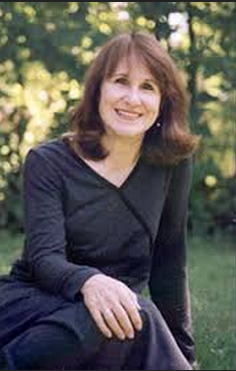 Author Margaret George
Author Margaret George
Margaret George’s depiction of life in Israel is very realistic. She brings tidbits of information that would not have been possible unless she had a through knowledge of the culture. The reader is confronted with Hebrew mysticism. The Israelites struggles through the very dangerous social-economical times are very apparent to the reader. Jesus’ ministry as seen through Mary’s perspective brings the reader to question what they believe they know about Jesus and his ministry, especially how he treated women. When I read the book, it not only was an interesting read but also strengthened my own faith. Mary became a leader among the women. In the story she was a mother and wife who lost not only her husband but daughter as well. She had been exiled and accused of prostitution because she chose to follow Jesus. The pains and struggles of any woman who has been abandoned not only by her family but her husband resonate in the book. She is a mother who wants to be reunited with her daughter and husband but is never given the chance to do so. Jesus comforts and ministers to her. After his death and resurrection, she travels with John and Jesus mother to become one of the leaders of the church. She is able to continue Jesus’ ministry to women and children because she understands them. The story is engaging and fast moving with plenty of interesting plot developments. The reader feels for Mary Magdalene. She is a fascinating character that the reader wants to succeed.
As an author, I look to bring the culture of my characters to the forefront of my readers’ minds. I admire Margaret George’s writings because I want my books to illuminate the unheard voices of the historical times I write about.
Published on May 28, 2014 03:00
May 27, 2014
#ArmchairBEA: Expanding #Blogging Horizons and Novellas/#ShortStories

Expanding Blogging Horizons
When I started blogging four years ago my blog was a mess. I had no idea what I was doing. I would sit there and just stare at the screen. How could I write 700 pages for a novel in two months but have such a hard time coming up with one single 350 word post? It just baffled me.
In 2012, I hired a social media coach to help me with my blog. She taught me to chose two days a week. One the first day I would post an article about something related to my most current release and on the other day I would post about a topic that is of interest about my WIP. She also taught me I could break up a post into a series but the series should not go past 5 postings. I've been following that formula ever since. I also participated in my first blog hop with her. I learned how successful they could be for any blogger. Since leaving her I have participated in blog hops and have won several blogging awards.

My blog has recently expanded to include two monthly blog hops, two weekly blog tours, and a special series that highlights the authors and those working in screenwriting. I still like to participate in special blog hops as much as I can. I've also recently redesigned my blog so that it includes links to all my books and my readers can see the books I plan to write. These can be found in the pages. Another page on the blog includes all my interviews, reviews and guest postings. I linked my website to my blog on the side bar where my logo is and have listed my blog in three major blog networking sites.
Novellas/Short Stories
I love writing short stories!
I had a hard time at first with writing them because I tend to write epics. Short stories challenge me and I love a great challenge. I tend to write short stories or participate in a short story anthology while I am in between novels. In fact, my publisher, Mountain Springs House, is in the process of releasing the short story I wrote that inspired my current WIP. I have a few other short stories on the back burner just dying for me to finish and hand them over to the editor.
Here are two of the short stories/anthologies that I have written.
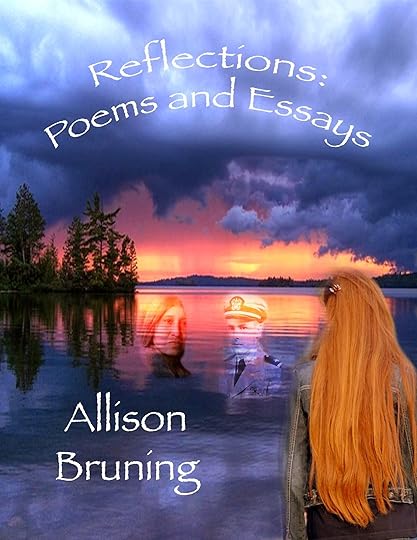
Reflections: Poems and Essays doesn't get as much attention as it deserves. It's a collection of historical essays from my blog and poetry that I have written over the years. It's a little gem that those who have read it have absolutely loved.
The waters of time never lie. Wisdom drifts down through the ages for all who dare to listen. History teaches us through honesty. Are you bold enough to hear the truth?
Reflections: Poems and Essays wraps you in the untold stories of the past. Sit next to the waters of time and listen to the wisdom of the past. What if John Wilkes Booth hadn't been killed at Garret's barn? Who are the Shawnee? Why did the Cherokee accuse Sequoyah of witchcraft?
These stories and more await you within this inspiring book.
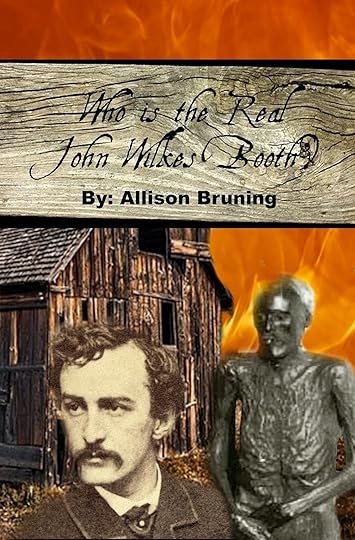 Who is the Real John Wilkes Booth is an essay that I originally wrote in high school with Nate Orlowek. Does that name sound familiar with you? It should. Nate Orlowek has been on many television shows throughout the years for his theory that John Wilkes Booth did not die at Garrett's barn but had died an old man in Oklahoma. I first met Nate when I was sixteen years old. We have been great friends ever since. I updated my essay and Mountain Springs House released it this year. It's a great read that will leave you questioning everything you learned about the death of John Wilkes Booth. I have obtained the rights from Nate Orlowek to use his research to write a screenplay and novel about John Wilkes Booth's deception.
Who is the Real John Wilkes Booth is an essay that I originally wrote in high school with Nate Orlowek. Does that name sound familiar with you? It should. Nate Orlowek has been on many television shows throughout the years for his theory that John Wilkes Booth did not die at Garrett's barn but had died an old man in Oklahoma. I first met Nate when I was sixteen years old. We have been great friends ever since. I updated my essay and Mountain Springs House released it this year. It's a great read that will leave you questioning everything you learned about the death of John Wilkes Booth. I have obtained the rights from Nate Orlowek to use his research to write a screenplay and novel about John Wilkes Booth's deception.
Published on May 27, 2014 21:00



